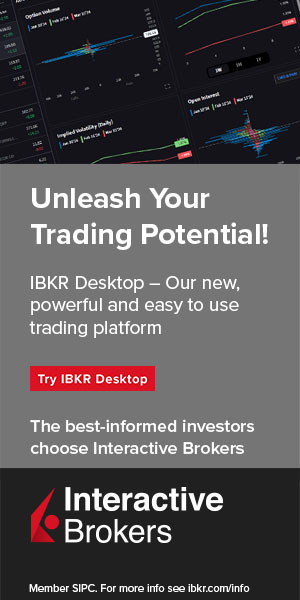Understanding sectors is like having a superpower in crypto investing.
Many individuals purchase cryptographic assets without fully understanding the underlying purpose of the company. This approach is akin to buying a stock solely based on a tip from a friend. Savvy stock investors thoroughly research the company behind the stock, and wise crypto investors should adopt the same strategy.

The Power of Sector Investing
In the traditional stock market, companies are categorized according to the Global Industry Classification Standard (GICS), which comprises 11 sectors. Although “GICS” might not sound very exciting, “superpower” definitely conveys its potential better.
Energy
Materials
Industrials
Consumer Discretionary
Consumer Staples
Health Care
Financials
Information Technology
Telecommunication Services
Utilities
Real Estate
Sectors allow you to group companies by industry. If GICS categorizes stock market sectors, this chart aims to categorize crypto sectors.
Sectors are like a superpower, giving you the ability to see categories within the blockchain industry—a form of X-ray vision. This insight helps you identify which companies are likely to be the winners in each crypto sector. As crypto investors, it’s crucial to understand our sectors. (Notice the rhyme.) Let’s explore some sectors in this chart based on their investment potential.

Store of Value (Excellent Potential)
This sector is dominated by a single player: Bitcoin (BTC). While Bitcoin hasn’t become a widely accepted currency, it has gained traction as a store of value, akin to “digital gold.” This is why more companies are storing part of their cash reserves in Bitcoin.
Many investors argue that if you’re going to invest in just one digital asset, Bitcoin should be it. They believe that despite short-term volatility, Bitcoin serves as an excellent long-term store of value.
Distributed Computing (Excellent Potential)
This category, which I would call “Blockchain Platforms,” is probably the easiest crypto investment decision after Bitcoin. If you believe in the future of blockchain, then platforms for its development will be essential, much like Windows, Mac, or Android operating systems are for app development.
However, Ethereum’s dominance is not guaranteed. Many technology platforms gain early dominance only to be surpassed later (think Betamax, MySpace, IBM). Other strong contenders in this space include Binance Smart Chain (BNB), Cardano (ADA), and Solana (SOL).
We may end up with:
1. Ethereum may solidify its position as the clear leader, with a few smaller blockchains focusing on niche applications.
2. We might see the emergence of two or three major competing blockchains, creating an oligopoly similar to the competition between Windows and Mac OS.
Financial Services (Excellent Potential)
Using DeFi products can still be quite technical and challenging. However, once you understand them, they significantly outperform traditional financial products like online banking and brokerages — the difference is stark, akin to switching from travel agents to Google Flights. DeFi apps will only continue to improve.
Investing in DeFi is generally riskier, representing the cutting-edge financial technology. However, the potential returns are also much higher. To invest in DeFi, look at projects with the largest market caps, as these typically have the most users and are well-positioned to become industry leaders.

Exchange Tokens (Moderate Potential)
Exchanges are a crucial part of the blockchain ecosystem, facilitating the buying, selling, and trading of digital assets. Given that trading tokens are the largest use case for blockchain today, digital exchanges would seem like ideal investment opportunities.
However, traditional exchanges face significant legal and regulatory challenges. Each country’s laws are continually evolving as they adapt to blockchain, a global and borderless system that operates 24/7. This makes running a traditional exchange complex and challenging.
Privacy Coins (Limited Potential)
Privacy coins offer complete anonymity, unlike Bitcoin and other cryptocurrencies, which are only partially anonymous. While Bitcoin allows for transaction history tracking on the blockchain, private coins operate as a black box.
These coins are used for legitimate purposes, such as protecting personal privacy or evading oppressive regimes. However, they are also favored for illicit activities, making widespread adoption unlikely. Governments are particularly opposed to them. Furthermore, they face the same challenges as other cryptocurrencies in the “currency” sector.
Gaming (Moderate Potential)
Blockchain economies are akin to video game economies, where players use real money to purchase virtual items like custom skins and weapons. There’s a notable overlap, but no clear category leader has emerged yet. This will be an exciting and dynamic space to monitor.
In the traditional video game industry, while there are thousands of games and hundreds of publishers, few present solid investment opportunities. Savvy investors might focus on gaming platforms, similar to how they would invest in Microsoft (Xbox) or Sony (PlayStation).
The Sector Superpower, Summarized
Viewing blockchain projects through a sector lens is akin to having real-life “laser eyes.”
While others are swept up in “price trends,” “social media buzz,” or other crypto frenzies, you can see through the noise.
Sectors offer a clear, logical perspective on blockchain investment opportunities by category.
Learn from market wizards: Books to take your trading to the next level


 Hot Features
Hot Features














